In most cases, having Leatherjackets in your lawn is perfectly normal. They’re part of the natural balance of living organisms that inhabit your turf and should be nothing to worry about.
However, infestations can result in a lot of damage to a lawn, in very much the same way as an infestation of Chafer Grubs.
Leatherjackets can damage the grass in your lawn as they feed on the roots but in many cases, it’s not the larvae themselves that do the most.
It’s the animals that feast on them!
What Are LeatherJackets?
Leatherjackets are the larvae of the Cranefly, or Daddy Long Legs, or if we’re being formal, Tipula paludosa.
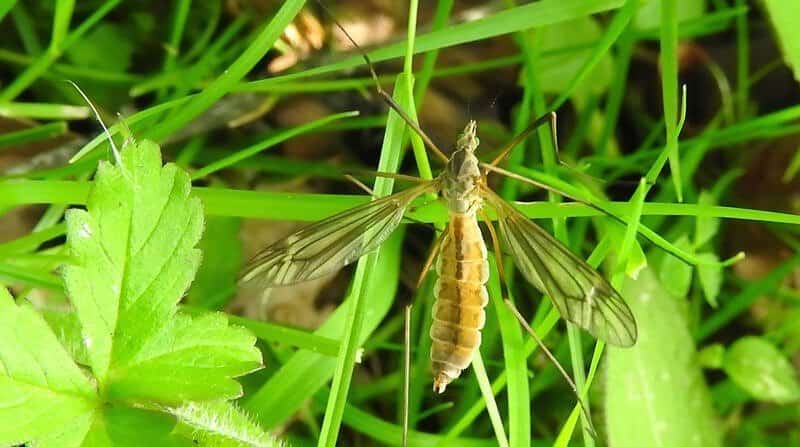
Craneflies don’t damage your lawn at all, it’s their larvae (or the Leatherjackets) which can be troublesome.
What Does a Leatherjacket Look Like?
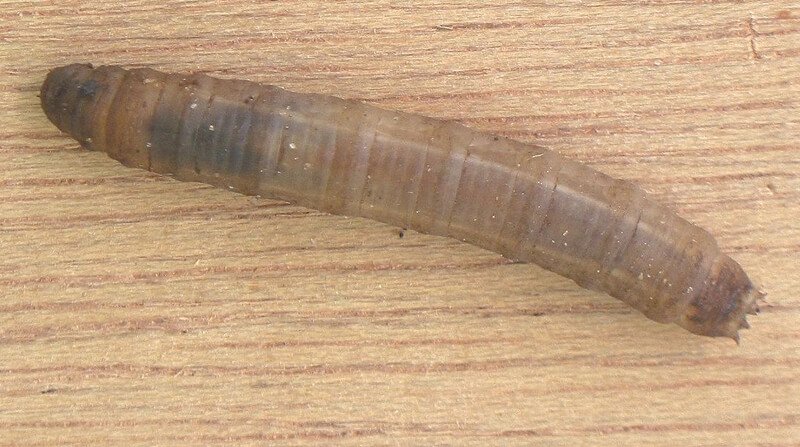
They have tubular, elongated bodies which can grow up to 3cm in length. The bodies have ribs on them and they’re a greyish brown colour with no obvious head.
When Do Leatherjacket Infestations Occur?
If you’re going to treat (or prevent) leatherjacket infestations effectively you need to know when they’re most likely to happen. And in order to know that, it helps to understand their life cycle.
The infographic below from www.amenity.co.uk explains it perfectly.
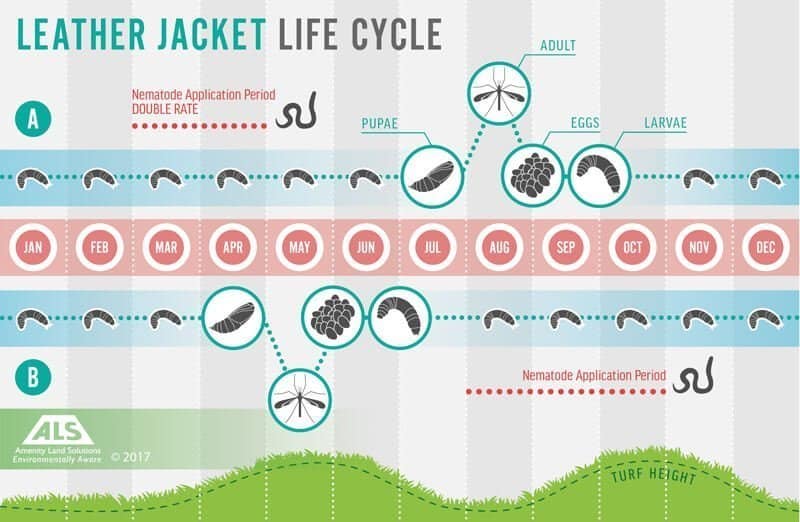
Crane flies emerge from soil in huge numbers in the late Summer, usually around August.
They can live for several days but generally, mate and lay their eggs in the soil within 24 hours. These eggs form into larvae, or Leatherjackets. They live in the soil over the next year, burrowing deeper during the winter months before returning to the surface the following summer when they pupate and turn into crane flies. Then they mate, lay their eggs and the cycle continues.
Because Leatherjackets come to the surface of the lawn during summer, that’s when you’ll know if you’ve got a problem.
How to Tell if You’ve Got a LeatherJacket Infestation
Leatherjacket infestations can easily be mistaken for Chafer Grub invasions as the symptoms are very similar.
They feed on the roots of the grass plant which can result in patches of dead, dry grass which is often loose.
There are several reasons that your lawn could develop patches of dead grass so if you see it, don’t automatically assume it’s Leatherjackets. To make sure, remove a small section of turf and if it’s full of them, you’ve got a problem.
If that doesn’t give it away, this will;
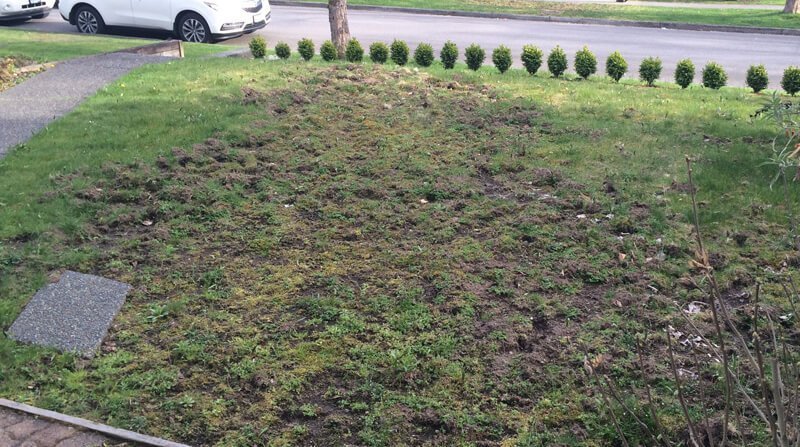
Local wildlife like Jays, Magpies, Rooks and Crows love to feed on Crane Fly Larvae and they will tear up the lawn so they can feed on it. Foxes, Hedgehogs and Badgers will get involved too, digging out chunks of your lawn to get at them.
If you live in rurally, you might also start to find molehills appearing as they also feed on the Leatherjackets.
What to Do if You Have a Leatherjacket Problem
Depending on how bad the infestation is you may choose to do one of two things;
- Repair the lawn
- Replace the lawn
Before you make a decision, weigh up the costs of lawn renovation versus the cost of replacing it. If you’ve only got a small area of grass it’s often more cost-effective to replace it (and you have a much higher chance of successfully removing the problem).
1. Repair the Lawn
If you’ve gotten away with only minor damage, repairing the lawn is very viable.
If this is the case, follow these instructions;
Step 1: Scarify Your Lawn
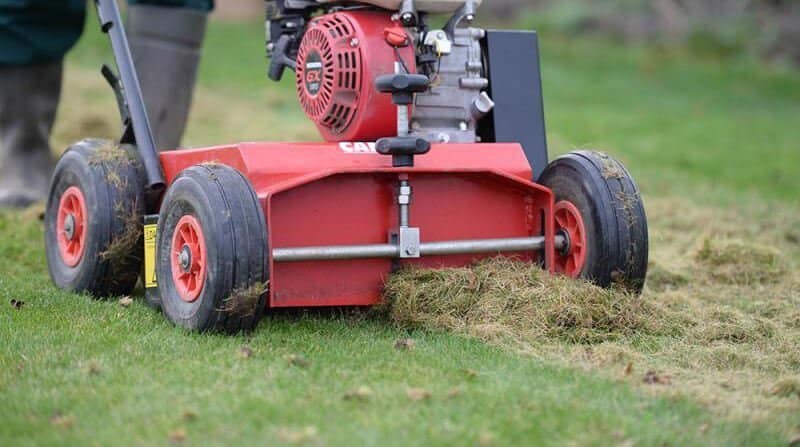
If you’ve had an infestation the first thing you should do is scarify your lawn.
- Removing excess lawn thatch is good for the overall health of your lawn but it’ll also create the perfect bed for sowing grass seed.
- The removal of excess thatch also opens up the soil in preparation for step 2.
Read: How to Scarify Your Lawn (The Ultimate Guide)
Also Read: How to Choose the Right Scarifier For Your Lawn. Plus, My Top Choices
Step 2: Kill the Leatherjacket Larvae
To kill the Leatherjackets in your lawn you’ll need to apply a product called Nemasys Leatherjacket Killer.
It contains microscopic worms called Nematodes. These worms actively prey on Leatherjackets, attacking them through openings in their bodies and infecting them with a fatal bacteria.
When the Leatherjacket is dead the Nematodes reproduce and release new generation which preys on more Crane Fly larvae.
It all sounds pretty gruesome but there aren’t any chemicals available to kill Leatherjackets, so Nematodes is the only option. Plus, they work!
That said, Nemasys Leatherjacket Killer only works when;
- The grubs are active and close to the surface of the soil
- The ground is moist, and
- When temperatures are above 12°C (54°F)
This means applying a double dose in the Spring between April and May and again in the Autumn, typically late August through to the end of October.
You need to keep the soil moist for at least two weeks after application. If it’s dry, water the lawn every couple of days.
It’s important to scarify BEFORE applying the Nematodes. If you apply the Nematodes and then scarify, you’ll disrupt them while they’re trying to work and the results won’t be as good.
- Safe to you, children, pets and wildlife
- It is a perishable product so only buy when you're ready to use
Step 3: Spread New Grass Seed
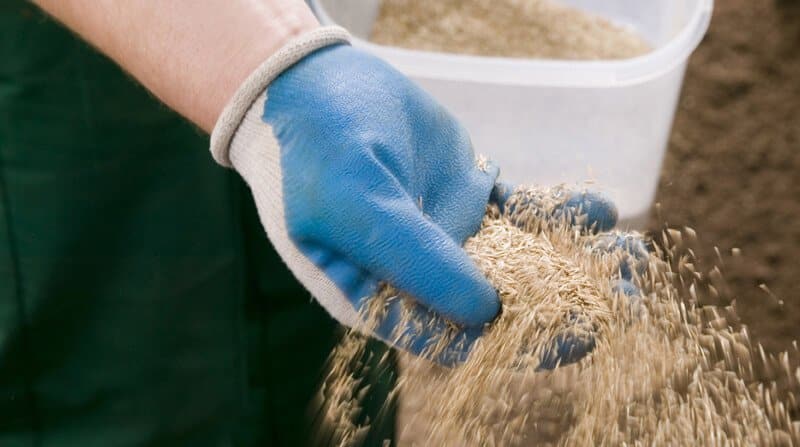
When you take a scarifier to your lawn, it’ll look pretty rough afterwards. There will be patches of bare soil and tatty looking grass.
Leave it like this and you’re guaranteed to replace your Leatherjacket problem with an invasion of moss or a weed takeover.
So overseed the lawn with a good quality grass seed. You can buy different types depending on the type of lawn you own and environmental factors like shade, damp etc.
Step 4: Fertilise Your Lawn
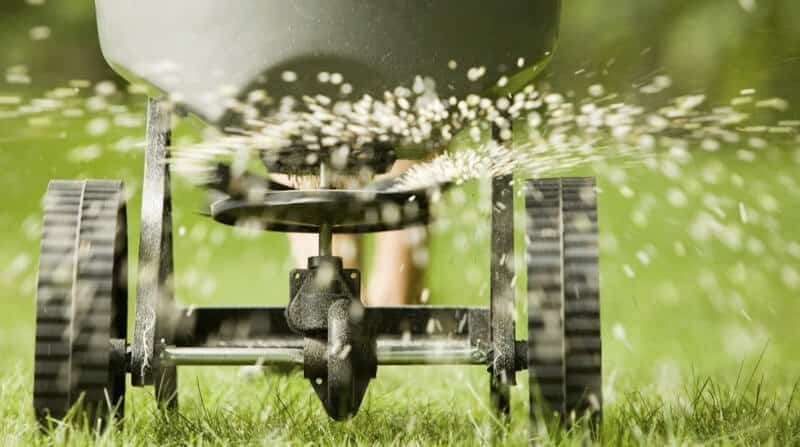
Once you’ve spread new grass seed you’ll want it to germinate and grow quickly. Applying a good quality pre-seeding fertiliser will help the new grass to establish and develop a healthy root system.
And it doesn’t affect the Nematodes!
Water your lawn regularly if there is no rain and you should see new grass shoots appearing within a couple of weeks. After a few weeks, your lawn should be back to its former glory.
2. Replace the Lawn
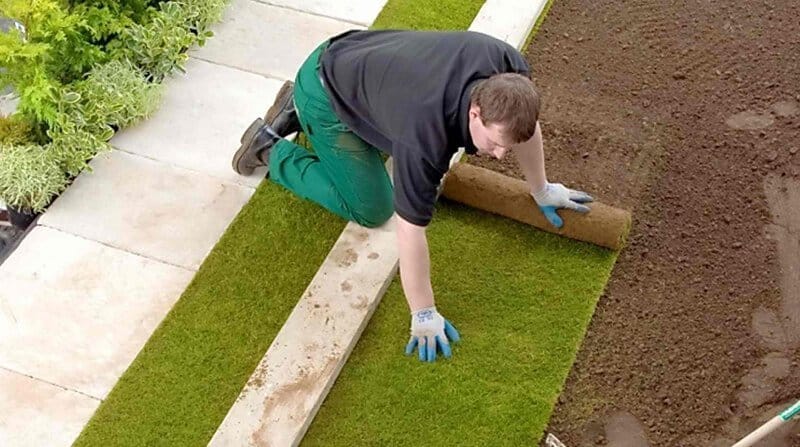
If the local wildlife has completely wrecked your lawn while feasting on Leatherjackets, you might choose to replace the lawn completely.
If you’re replacing your lawn, here’s what to do;
Step 1: Kill the Whole Lawn by With a Glyphosate WeedKiller
Apply a weedkiller that contains Glyphosate. This will do two things;
- It will kill all the weeds and their seeds in the lawn and soil. This reduces the chance of weeds growing through your new turf.
- It’ll also kill the grass which cuts off the Leatherjacket’s food supply.
Let it work its way right into the roots by leaving it for a couple of weeks.
If you don’t fancy mixing concentrated solutions, use something like Fast Action Weedkiller Pump 'n' Go Spray by Roundup.
If you’re happy to mix concentrate and you have a knapsack sprayer to apply it, I recommend a commercial strength glyphosate weed killer concentrate.
- Commercial Strength Weed killer
- Same as most professional-grade herbicides
Step 2: Remove the Dead Turf
Once the lawn is completely dead, remove the turf. You can do this with a spade, a turfing iron or if you have a large area of lawn, you can hire a turf cutter.
Step 3: Rotovate or Dig the Soil
Digging is hard work, even if you only have a small lawn so if you choose to do it with a spade, you’ll need a good soak in the bath afterwards!
The other option is to hire a rotavator, especially if you have a large area to dig.
Leave the soil open for a day or so and the birds will come and eat the LeatherJackets. Keep turning the soil over each day for a couple of weeks to expose as many Leatherjackets as possible.
Your local bird population will thank you!
Alternatively, you can water in some Nematodes (see above).
Step 4: Prepare the Ground and Lay Your New Turf
After a week or two of turning the soil, the Leatherjacket population should be pretty drastically reduced. So you can now prepare the ground for laying new turf.
Laying turf is beyond the scope of this article. That said, I have an article that covers the whole subject step-by-step, from preparing the ground to laying your new lawn.
How to Prevent Leather Jacket Infestations
If your lawn has fallen victim of a Leatherjacket infestation and you’ve spent time and money repairing or replacing your lawn, you’ll not want it to happen again.
So how do you prevent Leatherjackets from invading your lawn in the future?
The best way to do it is to…
Adhere to Good Lawn Care Practices
Good lawn care practices are the best way to prevent Leatherjacket invasions. Just a few simple tweaks in how you do things can vastly reduce the chances of an infestation.
Regular cutting of the grass, scarification, lawn aeration and fertilising the lawn will keep it thick and lush. This makes the Crane Flies have to work harder to burrow into the lawn and lay their eggs.
Apply Nematodes As a Preventative Measure
Nematodes can be applied as a preventative measure in the Spring and Autumn. If you have suffered from a bad infestation it’s a good idea to apply them each year.
A good supply of Nematodes in the soil will keep Leatherjackets at bay.
In Conclusion
Just because you see a few Leatherjackets in your lawn doesn’t mean you should go and pull the legs of every Daddy Long Legs you see. They’re part of a natural balance.
However, if your lawn is getting destroyed by the local wildlife you’ll need to act.
Follow the directions in this article and you’ll not only rid your lawn of Leatherjackets, you’ll prevent future invasions.
I’d love to see your before and after pictures. If your lawn has been ruined as a result of Leatherjackets or Chafer Grubs, take a picture and send it in. Even better, if you plan on repairing your lawn, send a before and after picture and I’ll share it with the community.
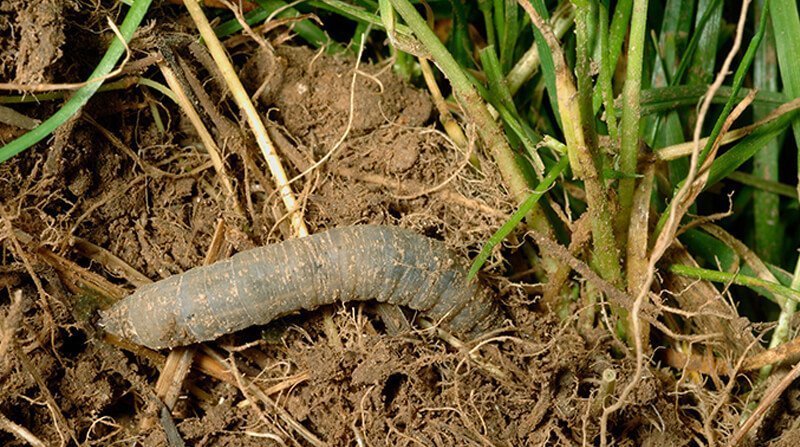



hello
I have had a bad infestation of leather jackets, with all the dead grass and animal problems that come with them. I dug up the lawn last summer and found app. 400
leather jackets per square meter, which were mostly fed to the birds or left to dry out.
The number of crane flies in Sept/Oct was 90% less than usual and I have dug the area over again this January. My plan is to reseed this spring. Is there a spray that can be used, prior to seeding, to get rid of any that may be left. I have used nemetods in the past but found them to be only partially successful and very expensive.
Hi Tim
I have a big problem with my lawn. It has been cared for by Green Thumb for nearly 3 years. In January they put a slow release fertilizer and a dose of iron spray. With days the lawn began to go brown in large patches. I have had them back to check today and they tell me it is due to Leatherjackets. I am not convinced. They dug up to sample patches about 6 ” square and 9″ deep and found 1 grub in each patch. My lawn is almost dead. I cannot believe this is due to Leatherjackets. HELP please.
Hi, what they may have done is kill the moss with the iron. I would get a second opinion before doing anything else.
Hi Tim, I scarify and aerate my lawn 2/3 times a year weed and feed it at regular intervals,Today I noticed a large patch and 2 smaller ones no other animal( bird) activity in digging the lawn fortunately could this be leatherjackets. I’m desperate for a remedy as I will be quite devastated in I have to have a new lawn Thanks in advance
I have had problems with lawns being wiped out by either leatherjackets, chinch bugs or grubs and my best and easiest method of replanting is to broadcast the seed on the lawn then dethatch the lawn very aggressively. it will look like a war zone but the thatch will be on top and provide a mulch cover for the new grass seeds which have been partially incorporated into the lawn by the dethatching flails hitting the soil. I have been asked about the seeds being left on top and we have taken handfuls of thatch and shaken them out on the pavement to find almost no grass seed there. this method has worked every time and is the cheapest way for replanting.